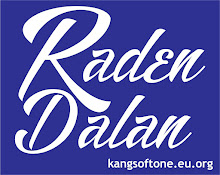Introduction
In an era where environmental consciousness is a driving force, the fashion industry is undergoing a transformative shift towards sustainability. Eco-conscious consumers are increasingly seeking clothing that not only makes a style statement but also aligns with their values. Let’s delve into the latest sustainable fashion trends that cater to both aesthetics and environmental responsibility.
The Latest Sustainable Fashion Trends
1. Circular Fashion Economy:
The circular fashion economy is gaining momentum, emphasizing a closed-loop system where materials are reused and recycled. Brands are adopting innovative approaches, such as designing garments with recyclable materials or creating take-back programs, encouraging consumers to return old items for recycling.
2. Ethical and Transparent Supply Chains:
Modern consumers are demanding transparency in the production process. Sustainable brands are responding by ensuring ethical practices, fair wages, and transparency throughout the supply chain. This shift allows consumers to make informed choices and support companies committed to social responsibility.
3. Upcycled and Vintage Fashion:
Upcycled and vintage fashion is a celebration of pre-loved garments. Brands are repurposing materials and transforming vintage pieces into contemporary styles, promoting a more circular and waste-free approach to fashion.
4. Plant-Based and Vegan Materials:
The rise of plant-based and vegan materials is evident in sustainable fashion. From pineapple leather (Piñatex) to mushroom leather (Mylo), designers are exploring cruelty-free alternatives without compromising on style. These materials not only reduce environmental impact but also appeal to the growing vegan consumer base.
5. Zero-Waste Fashion:
Zero-waste fashion focuses on minimizing textile waste during the design and production process. Designers are embracing creative pattern-making techniques that utilize fabric efficiently, leaving little to no waste behind. This trend reflects a commitment to reducing the fashion industry’s environmental footprint.
6. Slow Fashion Movement:
The slow fashion movement encourages consumers to shift away from fast fashion and embrace quality over quantity. Investing in timeless pieces, made to last, promotes a more sustainable wardrobe and reduces the need for frequent replacements.
7. Renting and Swapping Platforms:
Renting and swapping platforms have emerged as a sustainable solution to the transient nature of fashion trends. Consumers can now rent clothing for special occasions or participate in clothing swaps, promoting a more conscious and communal approach to fashion consumption.
8. Tech-Driven Sustainability:
Technology is playing a crucial role in advancing sustainable practices. From 3D printing to virtual try-on experiences, technology is enabling brands to reduce waste, streamline production, and offer personalized solutions to eco-conscious consumers.
Conclusion
The latest sustainable fashion trends are not merely a fleeting fad; they represent a fundamental shift towards a more responsible and ethical industry. As consumers increasingly prioritize sustainability in their purchasing decisions, the fashion world is responding with innovation, creativity, and a commitment to shaping a more environmentally friendly future. Embracing these trends allows eco-conscious individuals to make a positive impact without compromising their love for style and self-expression.
 KangSoftone Berita Informasi Terlengkap & Terbaru
KangSoftone Berita Informasi Terlengkap & Terbaru